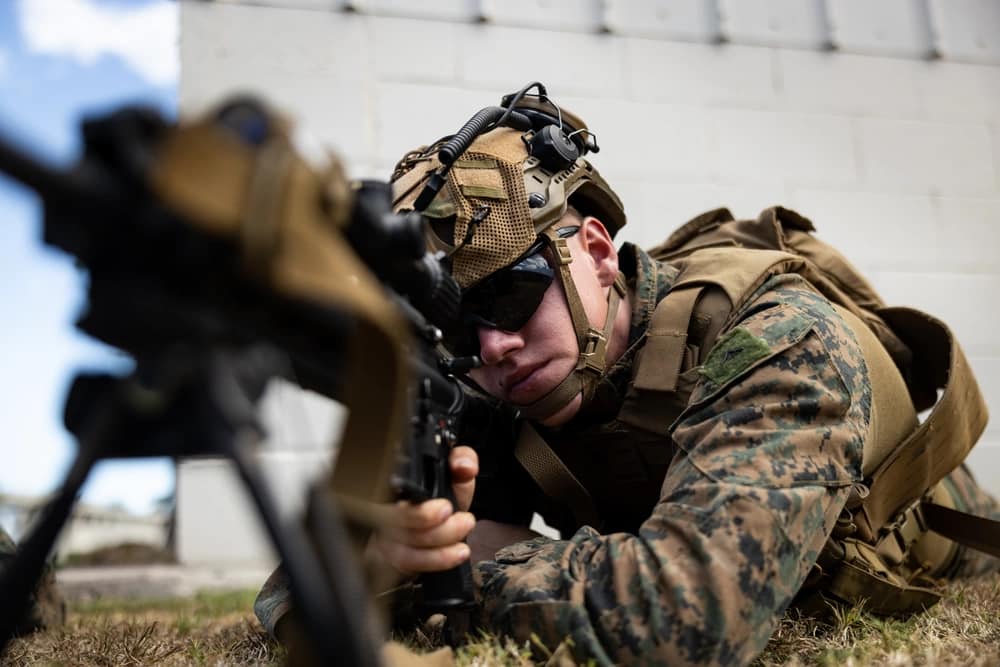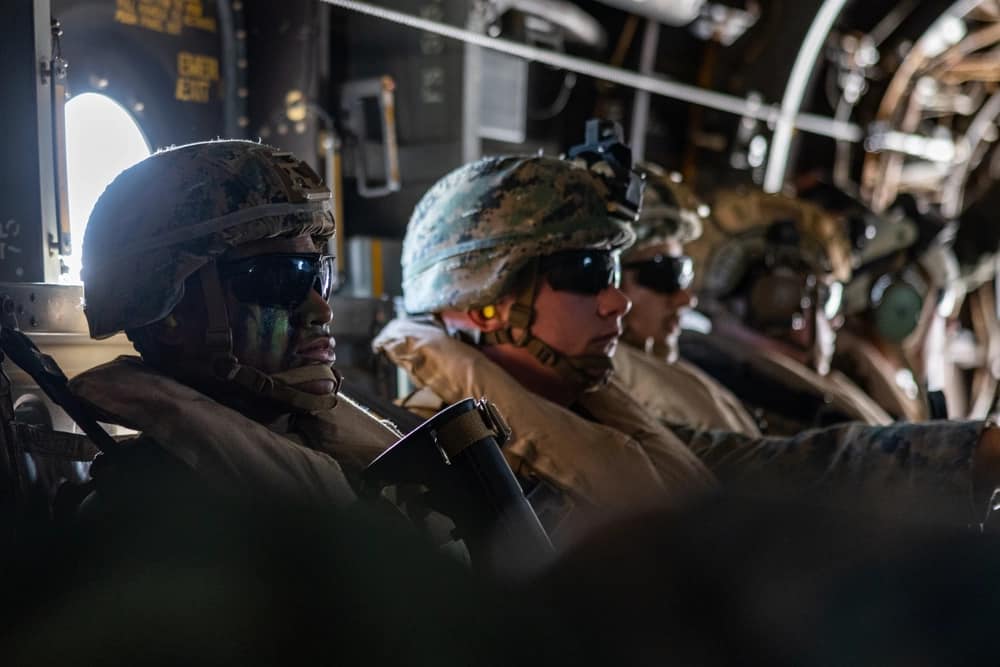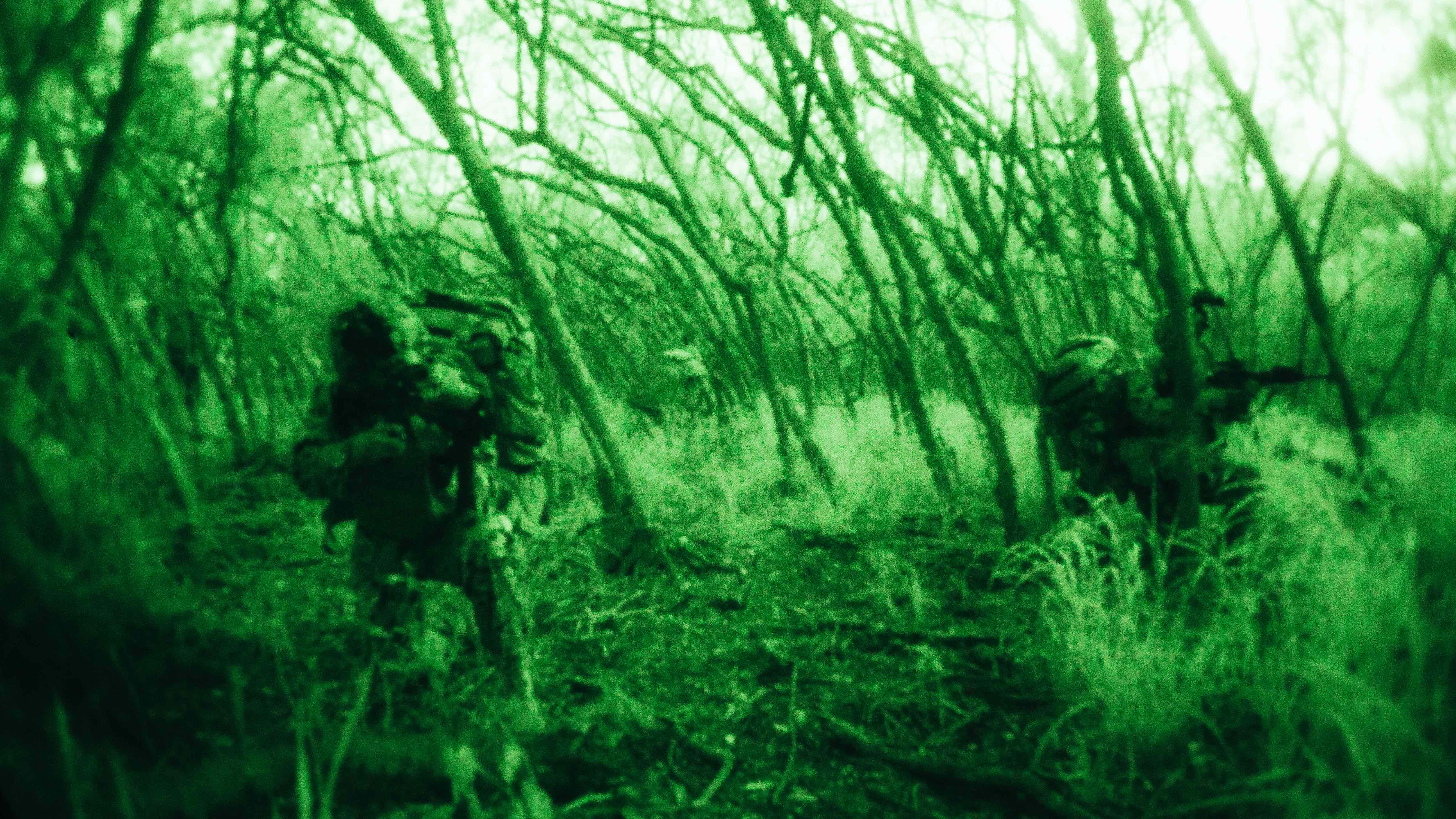
The Marine Corps has wrapped up a joint exercise in Hawaii and is beginning a rotational force deployment to Southeast Asia, with both activities contributing to the implementation of the service’s Force Design 2030.
Marine Rotational Force–Southeast Asia (MRF-SEA) began its second rotational deployment in the region on Sept. 26, according to a Friday release. A team of Marines and sailors are currently participating in the U.S.–Philippines joint Exercise Samasama, which started Monday and ends on Oct. 13. MRF-SEA is slated to conduct a series of back-to-back exercises and security cooperation engagements with allies and partners in Southeast Asia, including the Philippine Marine Corps, the Royal Malaysian Navy (RMN) and the Indonesian Marine Corps.
“Leading Marine Rotational Force–Southeast Asia while shoulder-to-shoulder with our partners, inside their respective command posts, provides a remarkable and dynamic vantage point,” said Col. M. Thomas Siverts, commanding officer, MRF-SEA 23, in the release.
“We are enabling operations that span the vast expanse of the Indo-Pacific region, demonstrating our adaptability in pursuit of our mission. This unique setup emphasizes our commitment to shared security objectives and enhances our collaboration with Allies and partners in a rapidly changing environment.”

MRF-SEA’s deployment – led by the 11th Marine Expeditionary Unit (MEU) commanding officer and command element – is until mid-December and and will exercise interoperability and enhance relationships with several priority Southeast Asian allies and partners. The force is modular and consists of a small command element with attached enablers, a reconnaissance platoon, joint terminal attack controllers, air and naval gunfire liaisons, explosive ordnance disposal Marines and unmanned aerial systems operators.
Deployment exercises and engagements will center on enhancing partner interoperability in combined heliborne operations, amphibious raids, coastal defense operations, company- and platoon-level combined live-fire exercises and naval operations. The deployment will also include subject-matter expert exchanges (SMEE) covering a variety of topics, such as reconnaissance; explosive ordnance disposal; chemical, biological, radiological and nuclear defense; operations in the information environment; joint fires; fire support. Unmanned aerial system operations will also be carried out.
The release stated that the deployment marks a significant step toward implementing Marine Corps Force Design 2030 concepts “by executing distributed command and control and force models that support concurrent and geographically dispersed activities. In addition to providing command flexibility, this distributed command and control limits forward logistical requirements in a potentially contested environment.”
The Marine Corps also has recently participated in an exercise focused on enhancing interoperability between the U.S. services. A Friday release stated that Marine Corps Forces, Pacific (MARFORPAC), along with forces from I Marine Expeditionary Force (MEF), III MEF, U.S. Pacific Fleet and the Hawaii Air National Guard demonstrated stand-in-force capabilities during Force Design Integration Exercise (FDIE) held on Sept. 25–28 on and around the Hawaiian Islands of Oahu, Kauai and the Big Island.
During the exercise, Marine units employed key stand-in-force capabilities, such as reconnaissance and counterreconnaissance, integrated targeting with the joint force and securing contested key maritime domains, according to the release. “The overall scenario for Force Design Integration Exercise was developed to test our ability to coordinate across all domains – sea, air, land, space, and cyberspace – with various platforms currently employed by the joint force in the Indo-Pacific theater,” said Lt. Gen. William Jurney, commander, MARFORPAC in the release, “The strength of the joint force really becomes clear when you bring all the components together to see it work in real-time.”

The 3rd Marine Littoral Regiment (MLR) also participated in the exercise, with the unit’s social media account stating: “Through the demonstration of Force Design 2030–enabled capabilities, 3rd MLR showcases the implementation of technology, doctrine, and policy initiatives to allow the stand-in-force to sense and make sense of potential adversaries, seize and hold maritime terrain, and conduct reconnaissance and counter-reconnaissance.” Col. John Lehane, commanding officer, 3rd MLR, said in a release that his unit was able to rapidly distribute combat credible forces across the Hawaiian Islands, set up its systems, effectively control its assigned area of operations and associated airspace and deliver effects within the exercise scenario.
During the exercise, the Marine Corps refined its ability to use multiple Force Design 2030–related platforms, including systems such as the Ground/Air Task Oriented Radar (G/ATOR), MQ-9 unmanned aerial vehicle and F-35B Lightning II, which allowed Marines to sense enemy forces and share information with the joint force across the battlespace and provide precision fires.
“Force Design Integration Exercise demonstrates Pacific Marines’ ability, right now, to effectively integrate within the joint targeting cycle,” stated Lt. Gen. Jurney in the release, “We will continue to develop and innovate in our ability to conduct distributed operations while forward as that joint force enabler.”





